Abstract
The relation between spontaneous abortion (n = 5010), stillbirth without congenital defect (n = 210), and working conditions was analysed in 22,613 previous pregnancies of 56,067 women interviewed, 1982-4, immediately after termination of their most recent (current) pregnancy. The 22,613 previous pregnancies were those in which at time of conception the women were employed 30 or more hours a week. Ratios of observed (O) to expected (E) fetal deaths after allowance by logistic regression for seven non-occupational confounding variables were calculated at four stages of pregnancy in 60 occupational groups and six main sectors for women whose work entailed various physical demands, environmental conditions, and exposure to chemicals. The O/E ratios for abortion were raised in the sales sector (1.13, p less than 0.05) and services sector (1.11, p less than 0.01) and for stillbirth in the sales sector (1.50, p less than 0.1). Substantially increased O/E ratios for late but not early abortion were found in operating room nurses (2.92, p less than 0.05), radiology technicians (3.82, p less than 0.01), and employees in agriculture and horticulture (2.40, p less than 0.05); in all categories the O/E ratio for stillbirth were also raised but only significantly (5.55, p less than 0.01) in the latter group. The O/E ratio for stillbirth was also raised in leather manufacture (3.09, p less than 0.01). In both individual and grouped analysis (the latter undertaken to minimise the possible effect of recall bias) significantly increased O/E ratios for abortion were found in women exposed to various high levels of physical stress, particularly weight lifting, other physical effort, and standing (p less than 0.01). Increased ratios for stillbirth at this level of significance (p less than 0.01) were found for other physical effort and vibration. Noteworthy chemical exposure was identified only in the health, services, and manufacturing sectors; the O/E ratio for stillbirth approached two in women exposed to solvents, almost all in manufacturing (p less than 0.01). In the latter sector exposed to solvents was also associated with an approximately 20% increase in abortion ratio at similar probability level.
Full text
PDF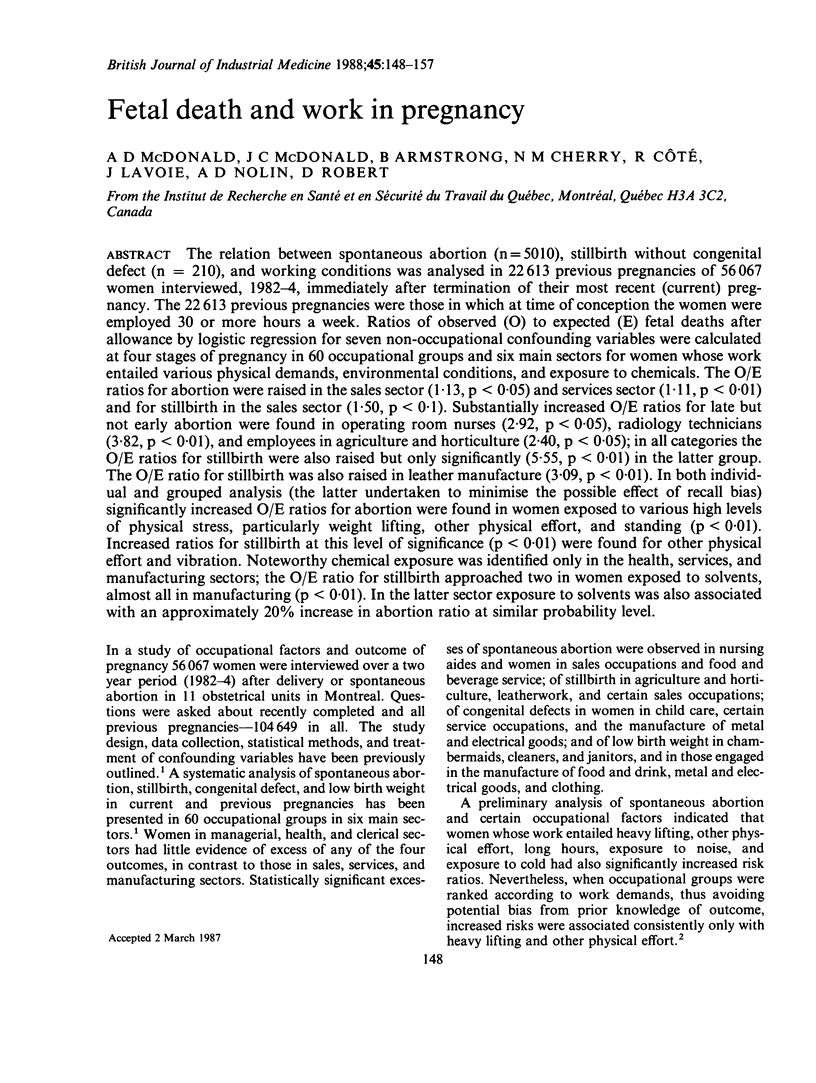
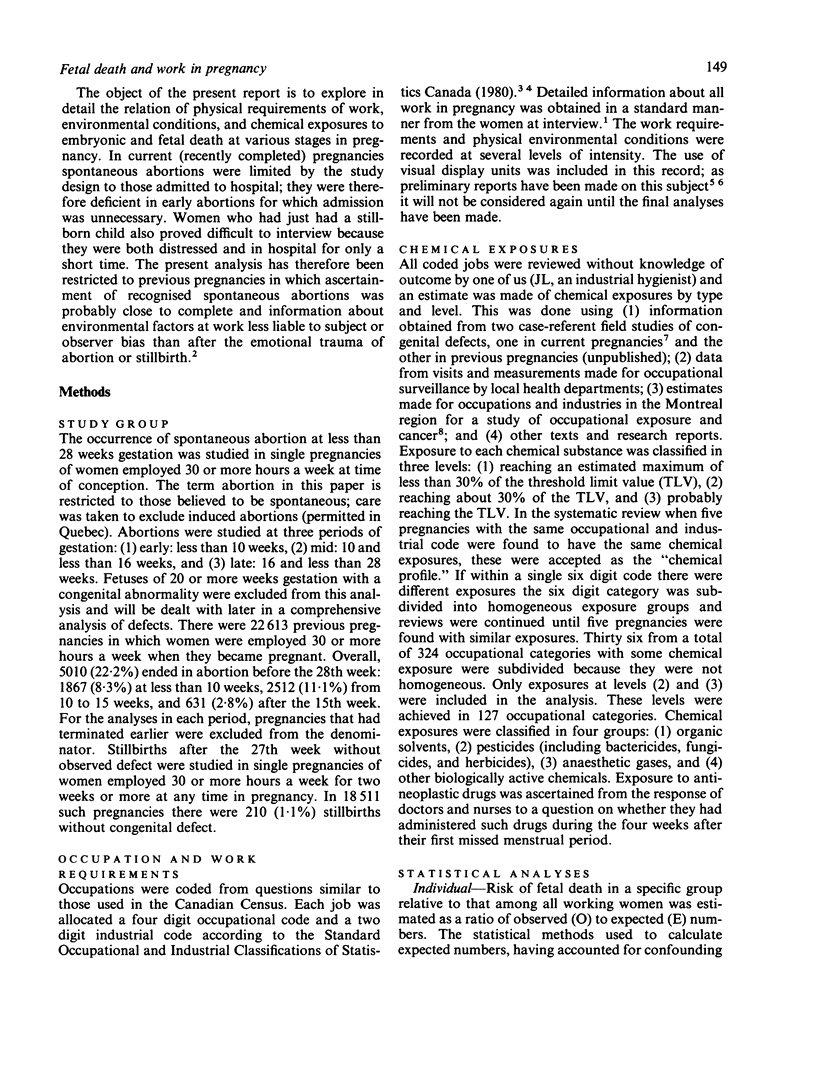
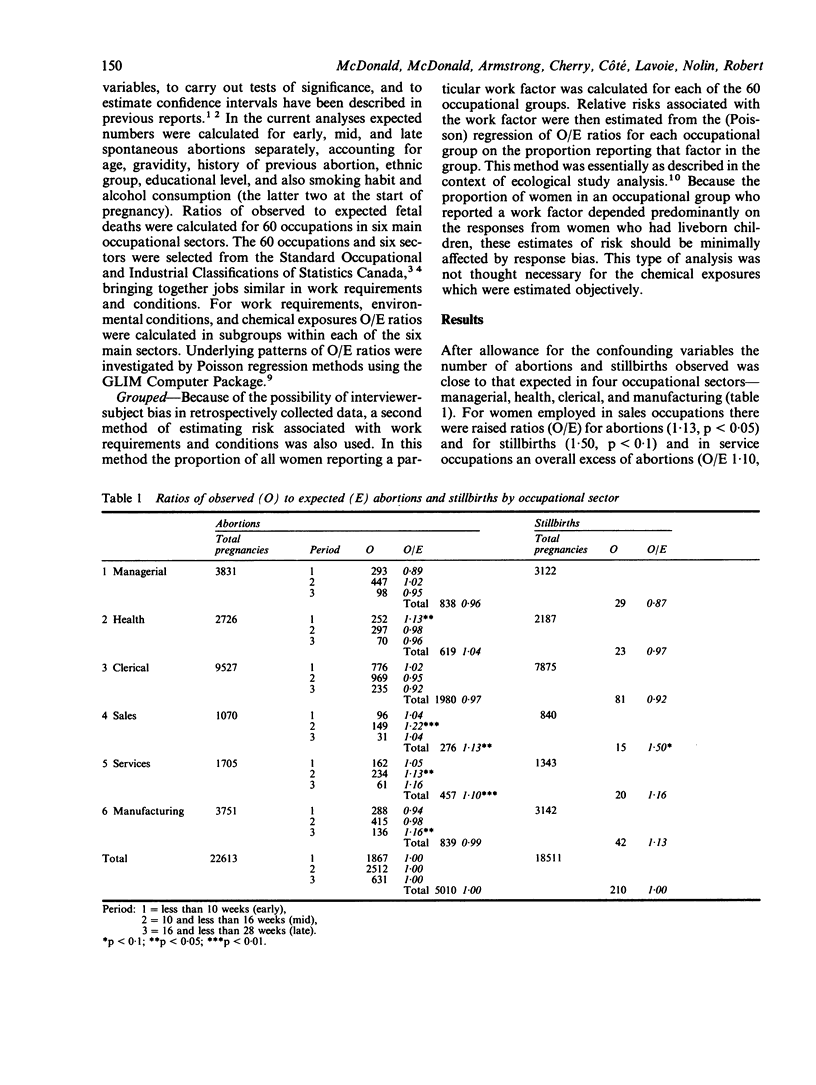
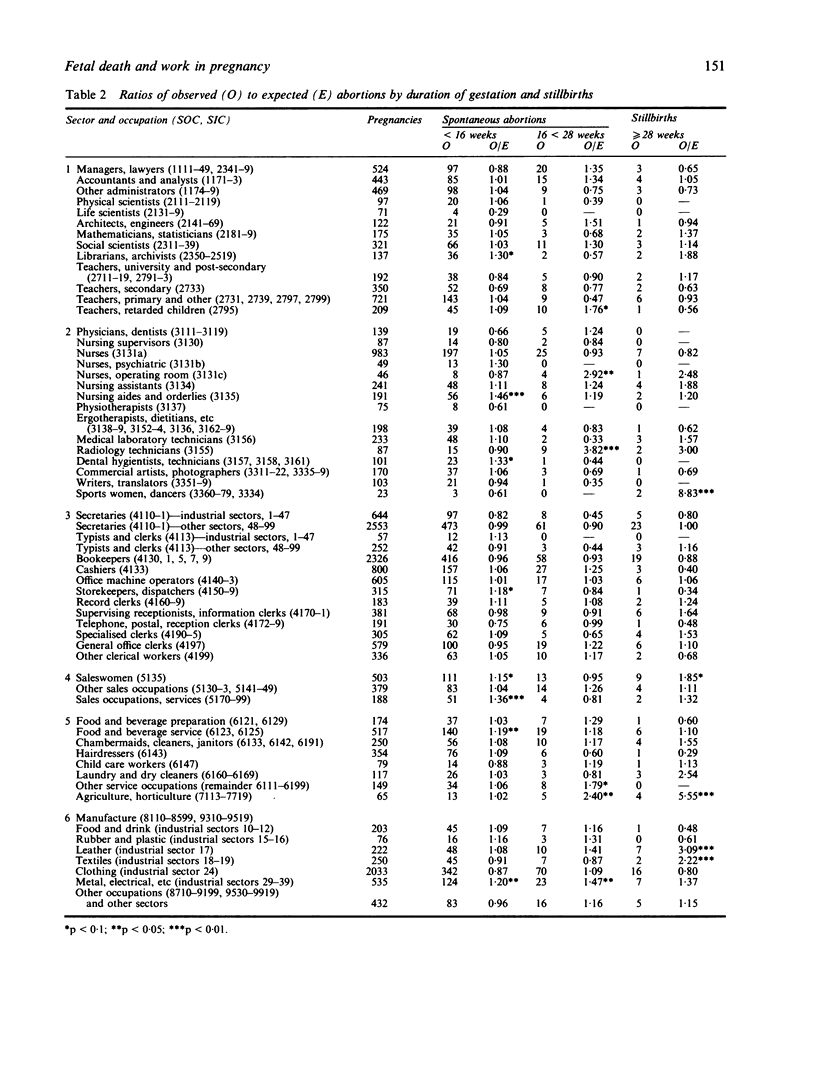
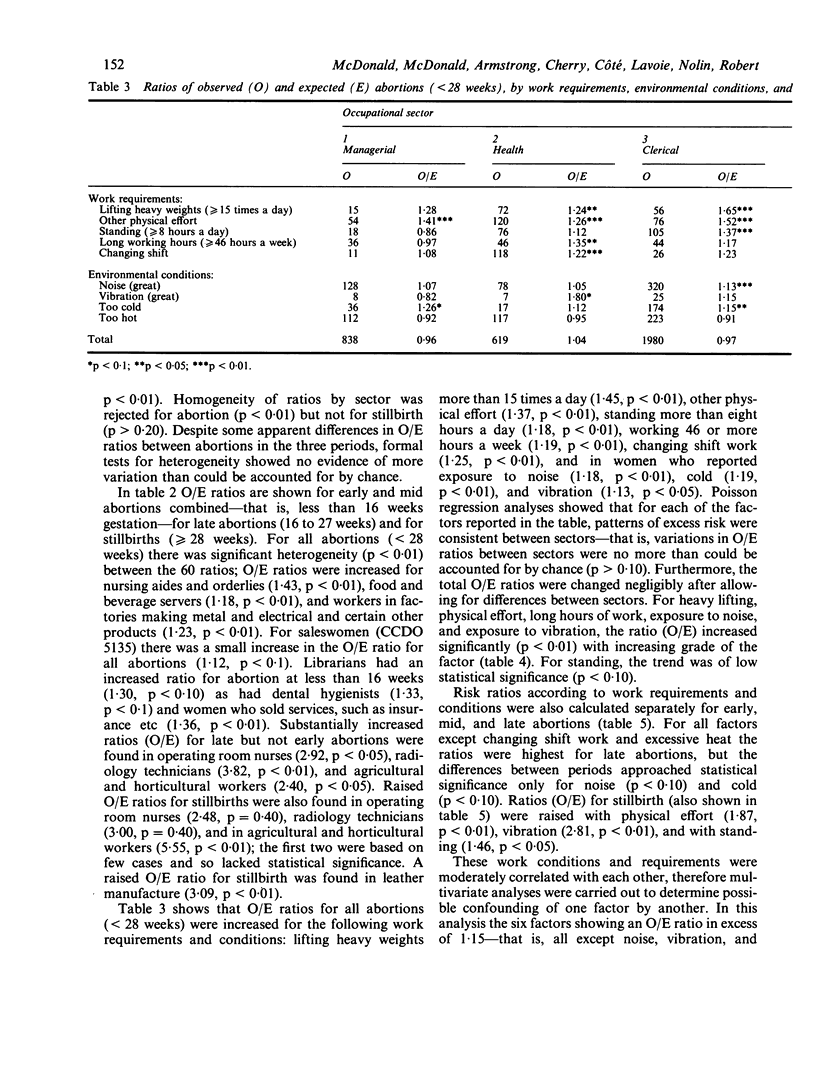
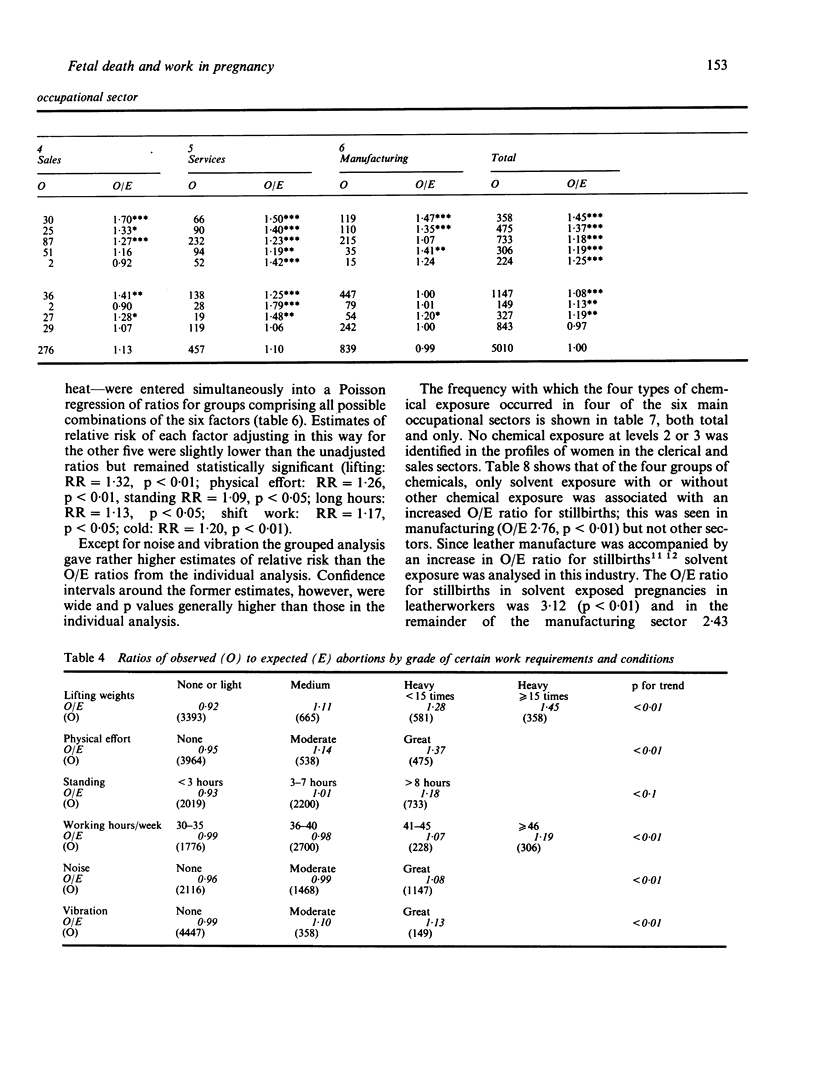
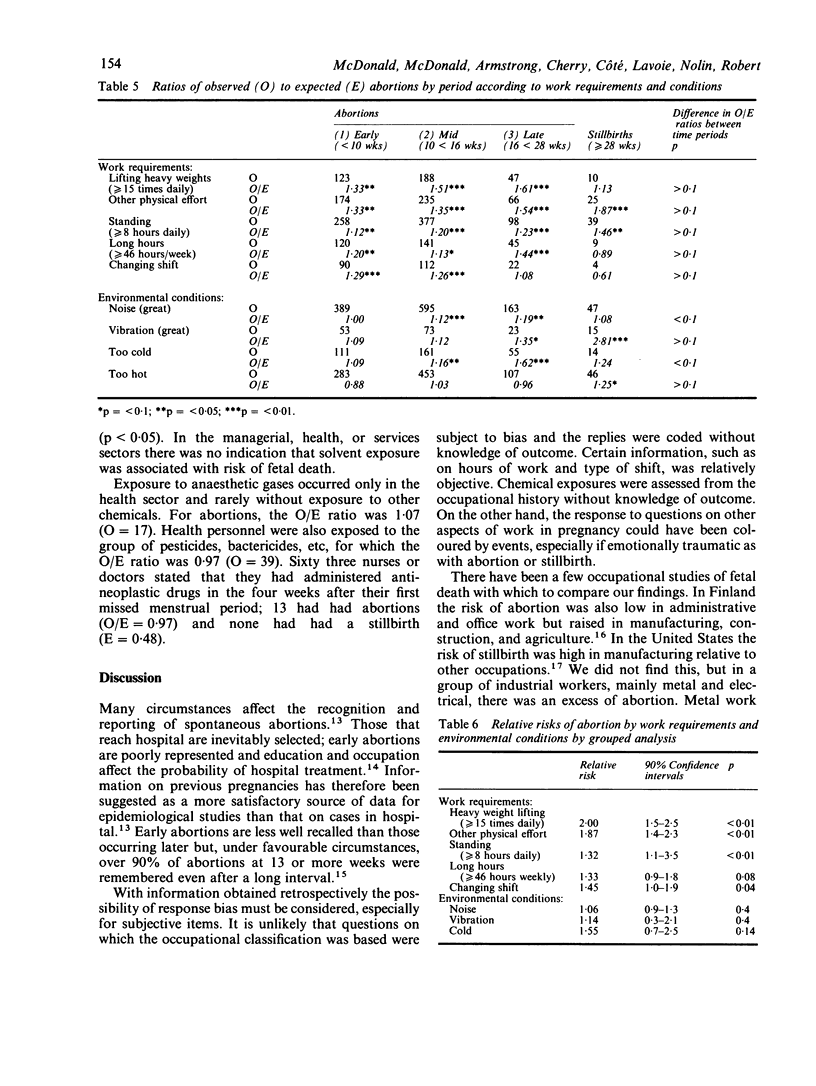
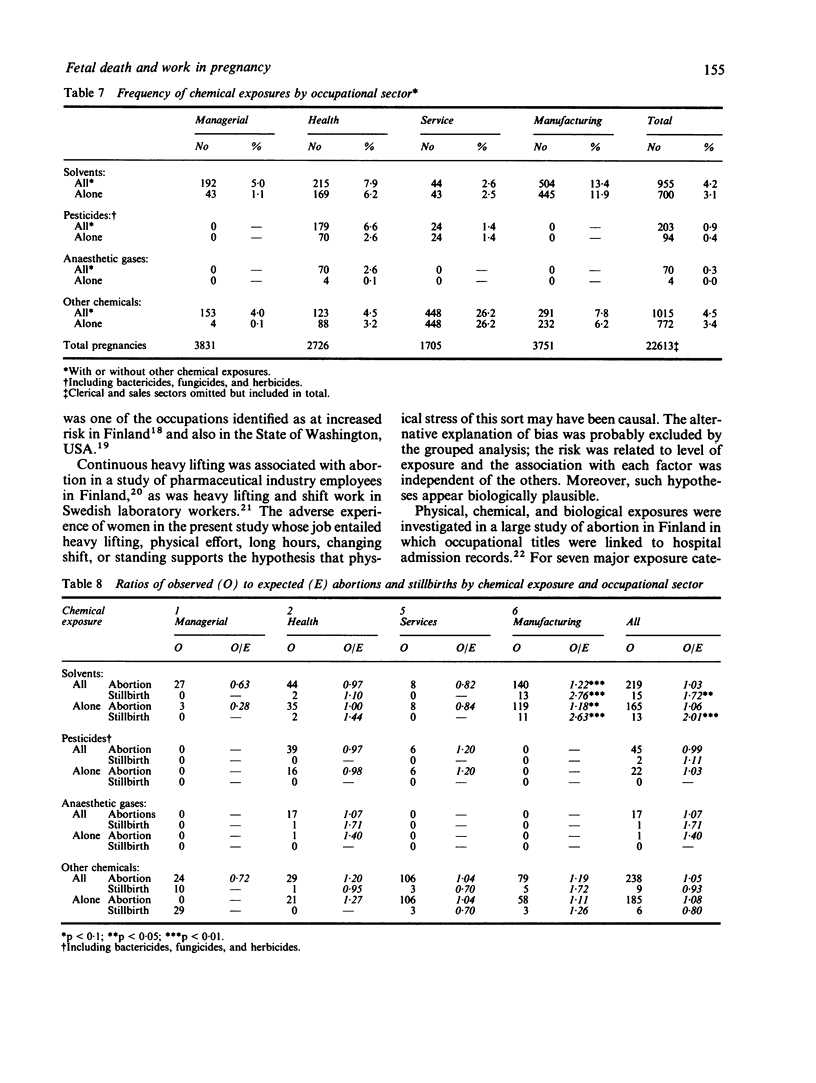
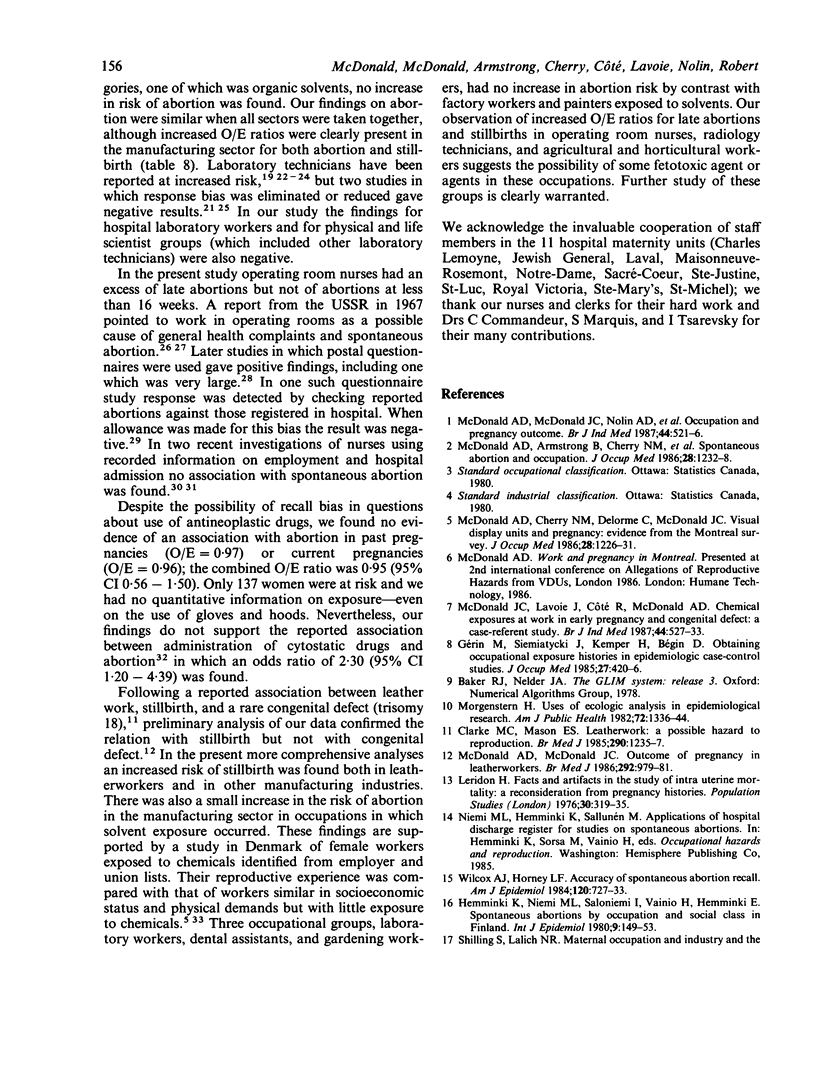
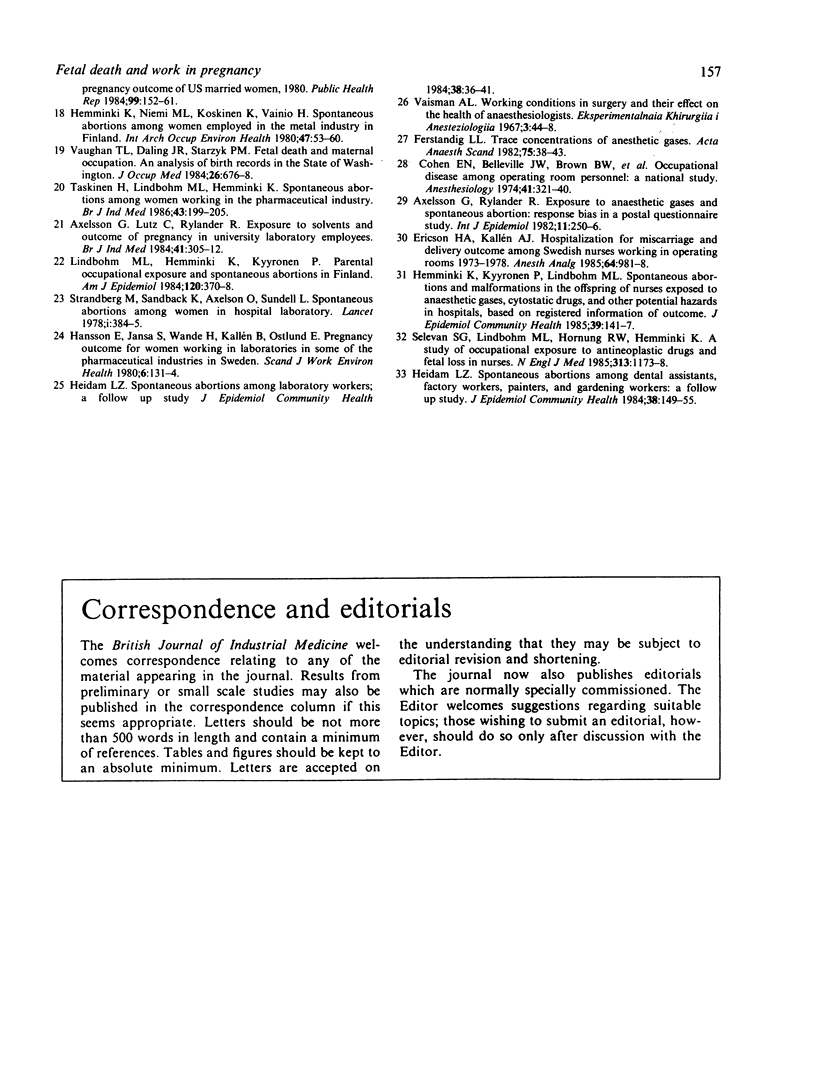
Selected References
These references are in PubMed. This may not be the complete list of references from this article.
- Axelsson G., Lütz C., Rylander R. Exposure to solvents and outcome of pregnancy in university laboratory employees. Br J Ind Med. 1984 Aug;41(3):305–312. doi: 10.1136/oem.41.3.305. [DOI] [PMC free article] [PubMed] [Google Scholar]
- Axelsson G., Rylander R. Exposure to anaesthetic gases and spontaneous abortion: response bias in a postal questionnaire study. Int J Epidemiol. 1982 Sep;11(3):250–256. doi: 10.1093/ije/11.3.250. [DOI] [PubMed] [Google Scholar]
- Clarke M., Mason E. S. Leatherwork: a possible hazard to reproduction. Br Med J (Clin Res Ed) 1985 Apr 27;290(6477):1235–1237. doi: 10.1136/bmj.290.6477.1235. [DOI] [PMC free article] [PubMed] [Google Scholar]
- Ericson H. A., Källén A. J. Hospitalization for miscarriage and delivery outcome among Swedish nurses working in operating rooms 1973-1978. Anesth Analg. 1985 Oct;64(10):981–988. [PubMed] [Google Scholar]
- Ferstandig L. L. Trace concentrations of anesthetic gases. Acta Anaesthesiol Scand Suppl. 1982;75:38–43. doi: 10.1111/j.1399-6576.1982.tb01880.x. [DOI] [PubMed] [Google Scholar]
- Gérin M., Siemiatycki J., Kemper H., Bégin D. Obtaining occupational exposure histories in epidemiologic case-control studies. J Occup Med. 1985 Jun;27(6):420–426. [PubMed] [Google Scholar]
- Hansson E., Jansa S., Wande H., Källén B., Ostlund E. Pregnancy outcome for women working in laboratories in some of the pharmaceutical industries in Sweden. Scand J Work Environ Health. 1980 Jun;6(2):131–134. doi: 10.5271/sjweh.2623. [DOI] [PubMed] [Google Scholar]
- Heidam L. Z. Spontaneous abortions among dental assistants, factory workers, painters, and gardening workers: a follow up study. J Epidemiol Community Health. 1984 Jun;38(2):149–155. doi: 10.1136/jech.38.2.149. [DOI] [PMC free article] [PubMed] [Google Scholar]
- Hemminki K., Kyyrönen P., Lindbohm M. L. Spontaneous abortions and malformations in the offspring of nurses exposed to anaesthetic gases, cytostatic drugs, and other potential hazards in hospitals, based on registered information of outcome. J Epidemiol Community Health. 1985 Jun;39(2):141–147. doi: 10.1136/jech.39.2.141. [DOI] [PMC free article] [PubMed] [Google Scholar]
- Hemminki K., Niemi M. L., Koskinen K., Vainio H. Spontaneous abortions among women employed in the metal industry in Finland. Int Arch Occup Environ Health. 1980;47(1):53–60. doi: 10.1007/BF00378328. [DOI] [PubMed] [Google Scholar]
- Hemminki K., Niemi M. L., Saloniemi I., Vainio H., Hemminki E. Spontaneous abortions by occupation and social class in Finland. Int J Epidemiol. 1980 Jun;9(2):149–153. doi: 10.1093/ije/9.2.149. [DOI] [PubMed] [Google Scholar]
- Lindbohm M. L., Hemminki K., Kyyrönen P. Parental occupational exposure and spontaneous abortions in Finland. Am J Epidemiol. 1984 Sep;120(3):370–378. doi: 10.1093/oxfordjournals.aje.a113901. [DOI] [PubMed] [Google Scholar]
- McDonald A. D., Armstrong B., Cherry N. M., Delorme C., Diodati-Nolin A., McDonald J. C., Robert D. Spontaneous abortion and occupation. J Occup Med. 1986 Dec;28(12):1232–1238. [PubMed] [Google Scholar]
- McDonald A. D., Cherry N. M., Delorme C., McDonald J. C. Visual display units and pregnancy: evidence from the Montreal survey. J Occup Med. 1986 Dec;28(12):1226–1231. [PubMed] [Google Scholar]
- McDonald A. D., McDonald J. C., Armstrong B., Cherry N., Delorme C., D-Nolin A., Robert D. Occupation and pregnancy outcome. Br J Ind Med. 1987 Aug;44(8):521–526. doi: 10.1136/oem.44.8.521. [DOI] [PMC free article] [PubMed] [Google Scholar]
- McDonald A. D., McDonald J. C. Outcome of pregnancy in leatherworkers. Br Med J (Clin Res Ed) 1986 Apr 12;292(6526):979–981. doi: 10.1136/bmj.292.6526.979. [DOI] [PMC free article] [PubMed] [Google Scholar]
- McDonald J. C., Lavoie J., Côté R., McDonald A. D. Chemical exposures at work in early pregnancy and congenital defect: a case-referent study. Br J Ind Med. 1987 Aug;44(8):527–533. doi: 10.1136/oem.44.8.527. [DOI] [PMC free article] [PubMed] [Google Scholar]
- Morgenstern H. Uses of ecologic analysis in epidemiologic research. Am J Public Health. 1982 Dec;72(12):1336–1344. doi: 10.2105/ajph.72.12.1336. [DOI] [PMC free article] [PubMed] [Google Scholar]
- Selevan S. G., Lindbohm M. L., Hornung R. W., Hemminki K. A study of occupational exposure to antineoplastic drugs and fetal loss in nurses. N Engl J Med. 1985 Nov 7;313(19):1173–1178. doi: 10.1056/NEJM198511073131901. [DOI] [PubMed] [Google Scholar]
- Shilling S., Lalich N. R. Maternal occupation and industry and the pregnancy outcome of U.S. married women, 1980. Public Health Rep. 1984 Mar-Apr;99(2):152–161. [PMC free article] [PubMed] [Google Scholar]
- Strandberg M., Sandbäck K., Axelson O., Sundell L. Spontaneous abortions among women in hospital laboratory. Lancet. 1978 Feb 18;1(8060):384–385. doi: 10.1016/s0140-6736(78)91104-2. [DOI] [PubMed] [Google Scholar]
- Taskinen H., Lindbohm M. L., Hemminki K. Spontaneous abortions among women working in the pharmaceutical industry. Br J Ind Med. 1986 Mar;43(3):199–205. doi: 10.1136/oem.43.3.199. [DOI] [PMC free article] [PubMed] [Google Scholar]
- Vaughan T. L., Daling J. R., Starzyk P. M. Fetal death and maternal occupation. An analysis of birth records in the State of Washington. J Occup Med. 1984 Sep;26(9):676–678. [PubMed] [Google Scholar]
- Wilcox A. J., Horney L. F. Accuracy of spontaneous abortion recall. Am J Epidemiol. 1984 Nov;120(5):727–733. doi: 10.1093/oxfordjournals.aje.a113940. [DOI] [PubMed] [Google Scholar]


